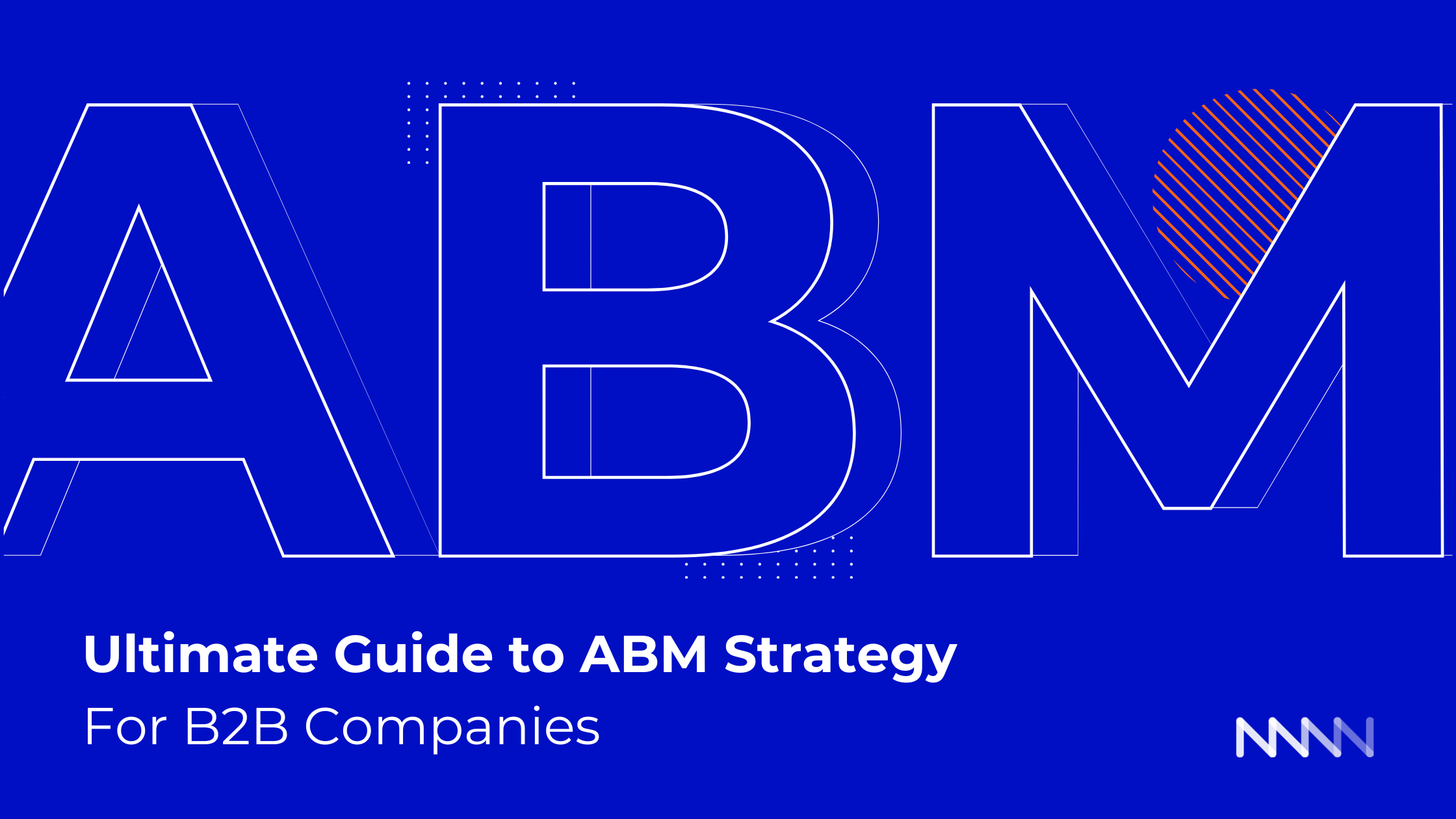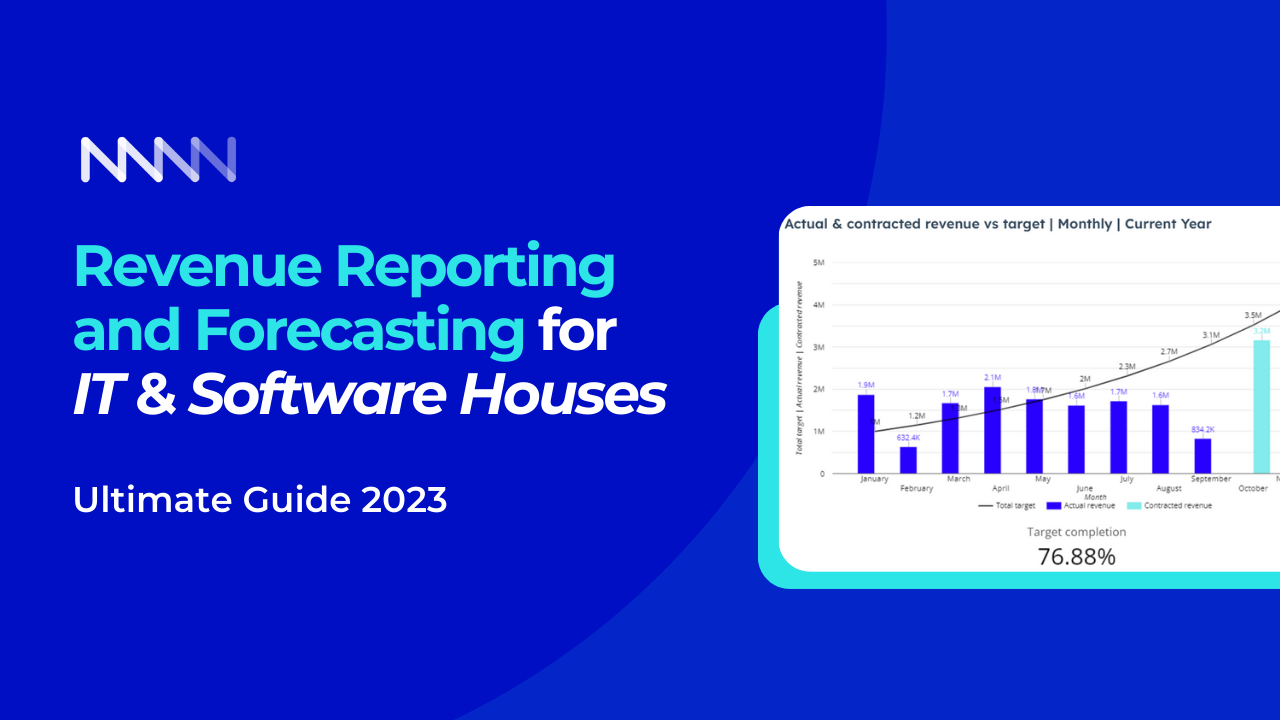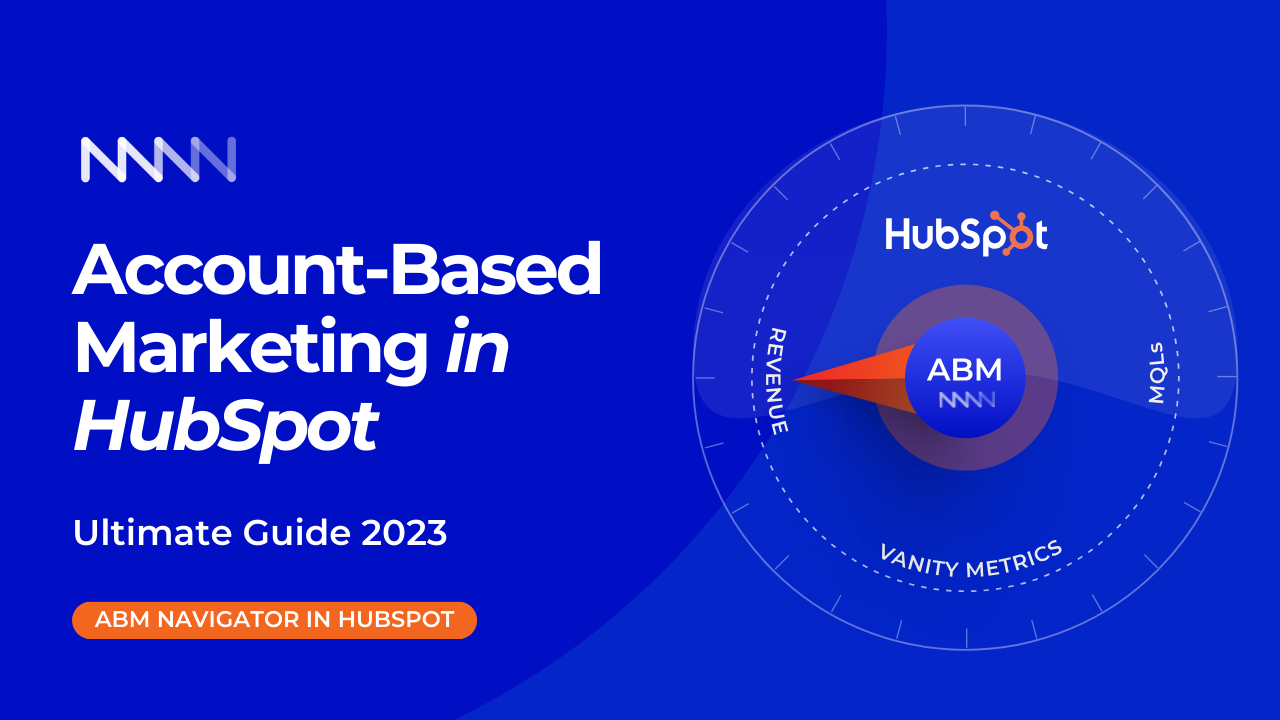Engaging Target Accounts Is Key to Pipeline Growth: Learn How to Do it Right
Starting a sales conversation is not easy, is it? It's like with dating. You cannot start a serious relationship (selling) on a first date. You need to get to know each other first.
So how do you get to know your clients better?
In this article, we show how we invited our customers on a first date with MAN Digital using Account-Based Marketing.
If you read our article about identifying your target accounts, you probably have a list of your ideal buyers.
Account-Based Marketing (ABM) is building relationships with target accounts - your real-life perfect clients.
97% of marketers achieve higher ROI with ABM than any other approach.
To make it work, you need to know your way around Targeting, Engaging, Activating, and Measuring.
Engaging is where your B2B relationships take form.

Let's explore how you can engage contacts within your target accounts in a way that makes them convert.
To see the bigger picture, download our free ebook on Account-Based Marketing for Tech Businesses.
Table of Contents
Gear Up for a Killer ABM Campaign
Any given Account-Based Marketing campaign is a combination of 3 components:
- The expertise of your ABM team
- The tools to empower them
- The budget that corresponds to your ambitions
Your ABM team is a powerhouse of knowledge. You bring in years of experience and come together to deploy the TEAM framework.
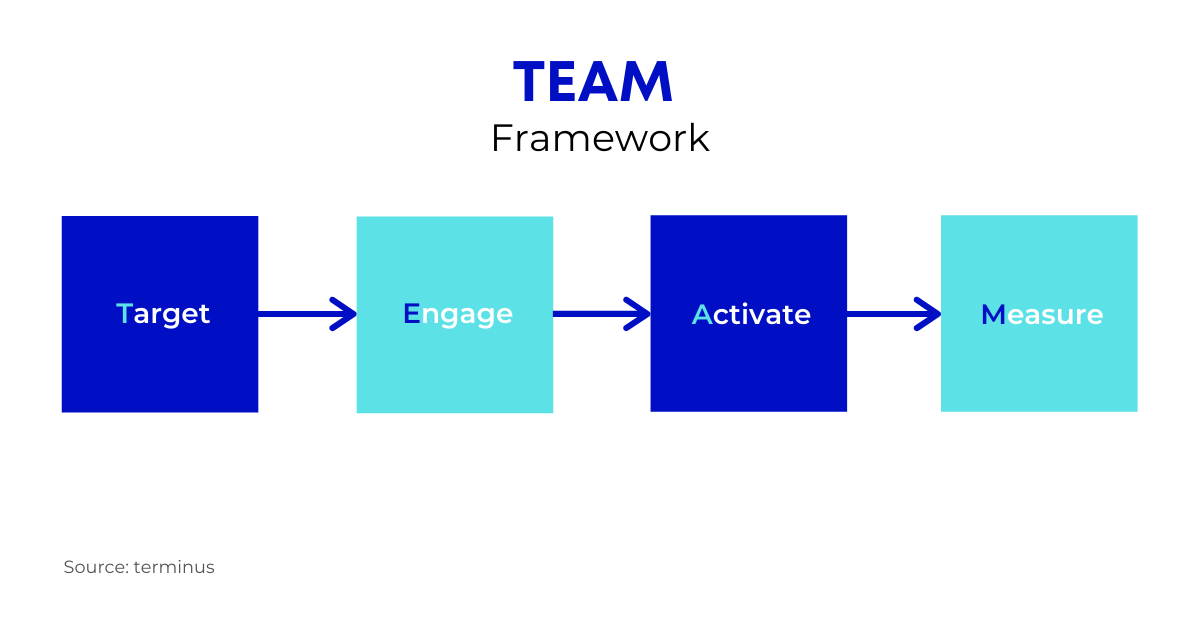
The further you get along your ABM journey, the bigger place marketing automation tools start to play.
At the Target stage, you learn about the importance of maintaining a clean client database that can be used for sourcing target accounts.
You also learn about using your CRM platform as a listing tool with predictive capabilities.
See what I'm driving at?
CRM is your ABM essential. It's the minimum requirement for automated, personalized marketing campaigns targeted at clusters of accounts.
At MAN Digital, we rely on HubSpot for ABM campaign management.
Determine Buying Roles
Once you're done with identifying, segmenting, and listing target accounts, you're left with the following:
- A list of target accounts - companies that are the best fit for your offer.
- A list of contacts for each account - the actual people you'll be interacting with.
Here is a link if you want to know more about target accounts listing or prospecting.
Your next step in building a successful ABM campaign is to establish buying roles within your target accounts.
Why do this?
Because you need to understand who makes the actual purchase decision. This helps channel your efforts and allocate the resources in a smart way.
HubSpot, for example, lets you organize your target accounts by adding any of the following Buying Roles:
- Blocker
- Budget Holder
- Champion
- Decision Maker
- End User
- Executive Sponsor
- Influencer
- Legal & Compliance
How do you know which buying role to assign?
You don't - until you start researching.
Usually, it's the domain of your sales team to discern roles within a company via networking and educated guessing.
Since your ABM team is 50% sales reps, you can let them do their LinkedIn magic and uncover buying roles insights.
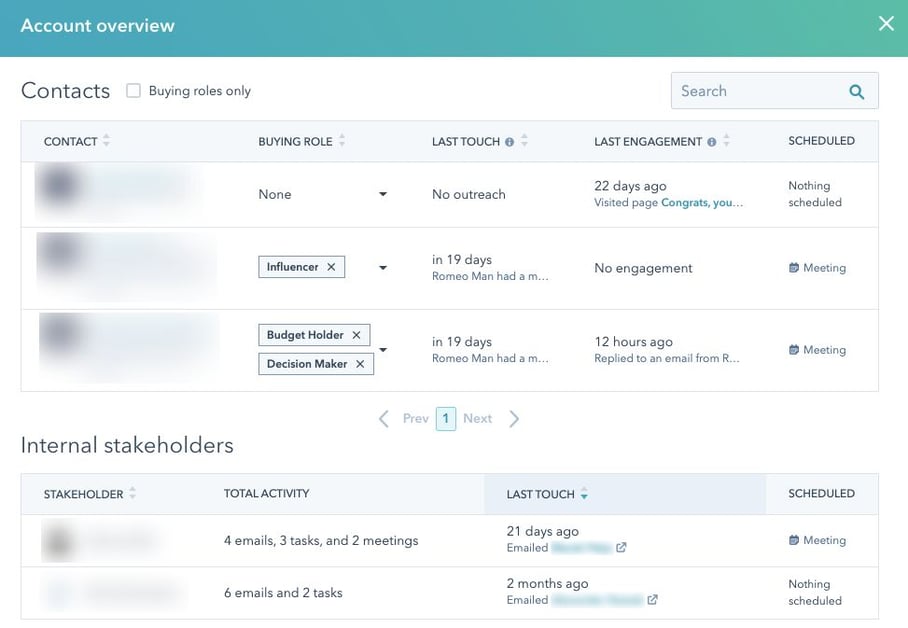
When you have buying roles assigned to the contacts within your target accounts, interacting with each person makes much more sense.
Above everything else, you're interested to engage Decision Makers.
Interactions with other contacts are determined by how well they serve you in getting to the people authorized to make a purchase.
Naturally, you want to know as much as possible about your Decision Makers. In marketing, how do you do something like this?
By defining buyer personas.
Leverage ABM Buyer Personas
First, let's clear some things up.
In traditional marketing, a buyer persona is a semi-fictional representation of your ideal buyer.
Think Marketing Mary or Sample Sally.
In Account-Based Marketing, a buyer persona is a composite sketch of your contacts - real people you interact with to build B2B relationships.
See the difference here?
Buyer personas, in their traditional meaning, aren't very helpful when you're dealing with Ideal Customer Profiles.
Semi-fictional is no longer enough. In ABM, you need real-life insights on specific categories of contacts within target accounts.
Because as much as we're focused on accounts instead of individual leads, we will be engaging specific decision makers within each account.
Therefore, it's helpful to define buyer personas that will guide you in addressing decision makers' concerns.
Here's a sneak peek at how we do it an MAN Digital.
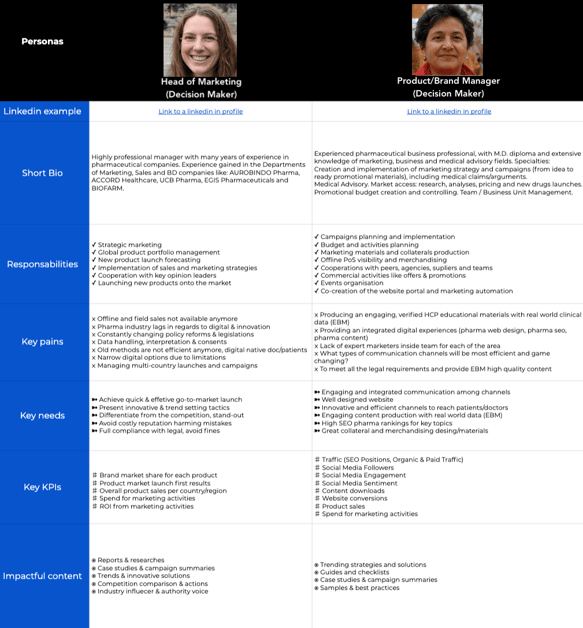 As you can see, we've moved away from inventing buyer personas' names and hobbies.
As you can see, we've moved away from inventing buyer personas' names and hobbies.
Instead, we focus on their level of autonomy, needs, and the exact types of content that resonate with them.
All of these are crucial insights for the Engage stage.
Within each of your target accounts, you'll be interacting with 3+ contacts that constitute a buying committee for B2B purchases.
Having well-defined buyer personas means you not only understand their motivations but also know which content you need to deploy.
Where do you get the insights for your ABM buyer personas?
There are several sources and none of them are based on speculations. Research only.
- Interviews (including the ones you conduct with your most successful current customers)
- Press releases
- Conversion forms
- Social listening
- Experience with your current clients
Prepare Organizational Charts
Now that you've established buying roles and defined personas, you can take it one step further and lay these insights out in an Organizational Chart.
Org Charts are simply a better way to visualize the structure of target accounts.
Why do this? For any of the following reasons.
- Relationship mapping - visualizing relationships between contacts.
- Account mapping - visualizing relationships between parent and child companies.
- Customized sales personas - visualizing stakeholders.
- Placeholder contacts - using placeholders to avoid blockers.
When it comes to Org Charts, your only limit is the depth of your insights.
You can make it as detailed as mapping every employee of every department - or keep it simple and only include key stakeholders.
Don't know where to start? Grab this free organizational chart template from HubSpot.
You can also have org charts inside HubSpot. Then, when you move to the Activate stage and have a record of engagement with contacts from target accounts, you'll have heatmaps for easy visualization of interactions over time.
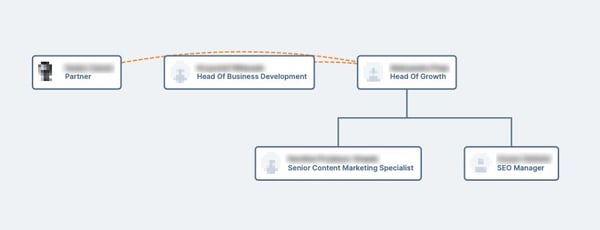

We at MAN Digital are big fans of HubSpot's Org Charts integration. It helps us structure engagement with target accounts and keep our focus on decision makers.
Lay Out Topics & Messaging Map
You did a great job getting this far in your research of contacts from target accounts. Now you can move to the actual engagement.
For this, we need to define the What and the How.
The What are the topics that will resonate with your ABM buyer personas. It is one of the MOST important things. If you don't have anything interesting to say, why would anyone bother?
The How are the ways to present content and convey the messages you craft for them.
First, let's sort out the What part.
We got started on this when developing ABM buyer personas. If you were diligent with that step, you already have some ideas around the topics that will work best for your decision makers.
IMPORTANT: Don't be generic and boring. Your messaging has to be sharp and resonate with your audience. Let's give an example.
Typical boring message: How to prepare a go-to-market strategy for Pharma?
Sharp qualifying content: Can Pharma companies really replace field sales with 100% digital product launch?
So let's organize the messaging. Below you can find an example of digital agency that provides services for Pharmaceutical industry.
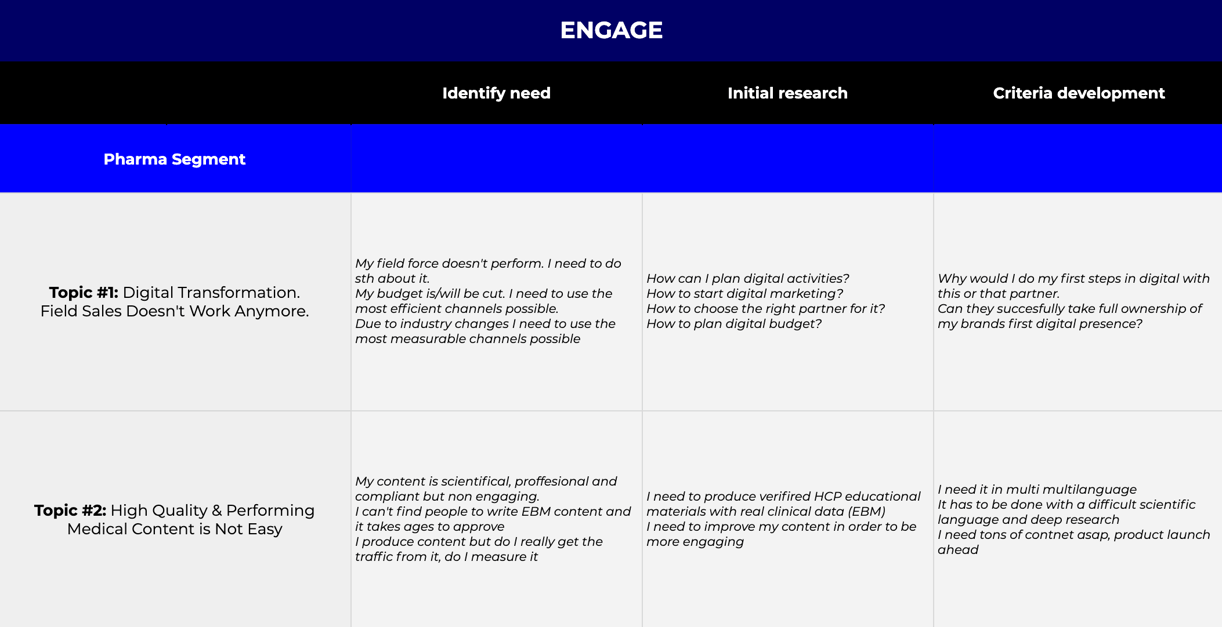
Here, we have a clean structure for message development around 2 key areas: An issue that field sales doesn't work anymore and the fact that there are a lot of struggle with creating a high quality medical content.
How do we came up with this topics?
By interviewing clients, talking with sales, researching what our buyer personas are posting. Don't overthink the topics, find the right topics from real data.
Define ABM Engagement Campaign Schedule
We now move to the How of engaging your target accounts.
Here, we define ABM campaign elements and put them in a specific order that would let us plan out engagements
But...did we really define what engaged account really mean?
Engaged Account Definition - To simplify: it means that any given prospect from a targeted account (ideally decision maker) have converted through your form and came into database.
By that we mean that you got to know client a bit better and went on a first date.
Here you have your entire Engage stage, laid out week by week. Feel free to copy this template and use it for your ABM campaign.
We'll be taking a deep dive into everything that constitutes an ABM campaign schedule, so keep reading 👀
And wherever you need additional guidance and clarifications, don't hesitate to get in touch :)
Let's see how we at MAN Digital bring all of the elements together.
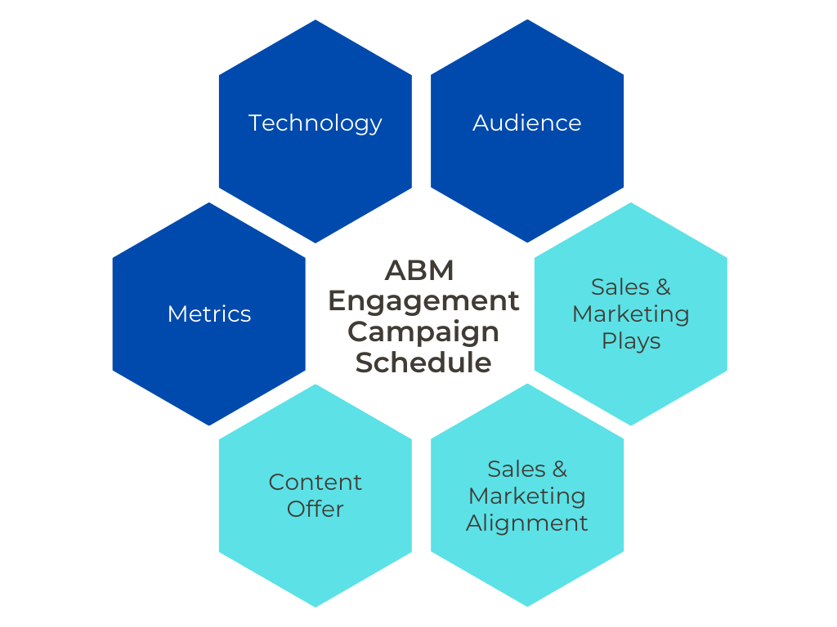
Audience
Audience is the segment of target accounts we approach. At the Engage stage, we're dealing with all the companies we plan to pursue.
As you're moving further with Engaged and Activated accounts, you'll be focusing on fewer and fewer companies.
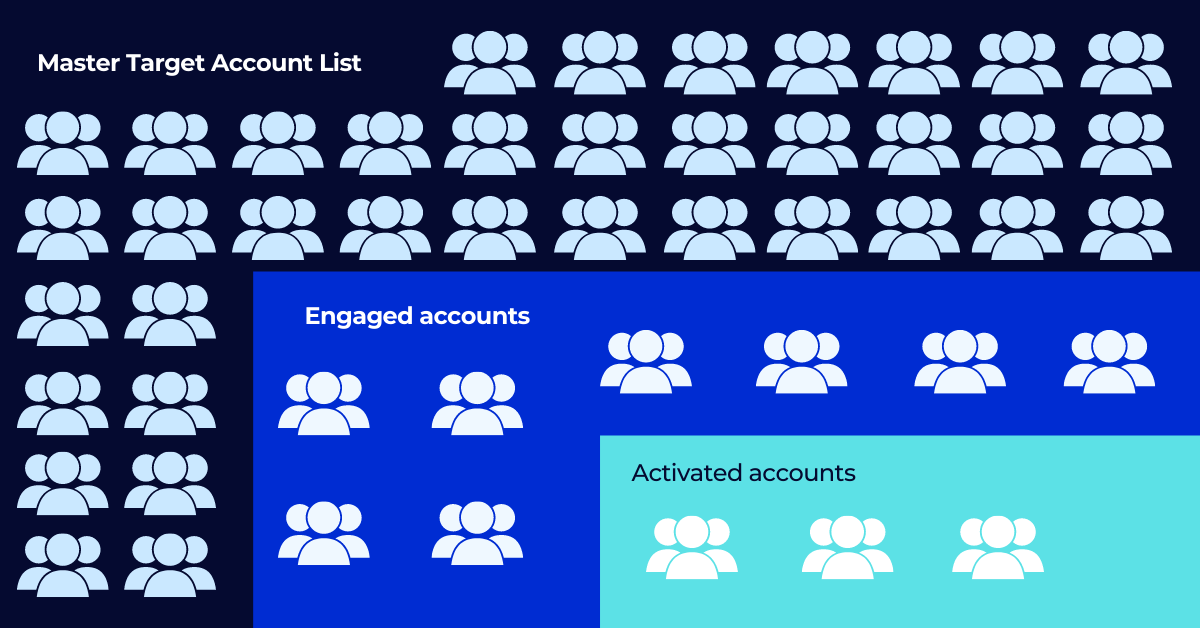
Metrics
Relevant to the goal we set for Master Target Account list, the metrics we use to measure success are:
- Accounts Reached - this covers website, email, and social interactions.
- Accounts Engaged - activated accounts, i.e. contacts converted by filling out forms.
- White Space - where you're lacking any kind of engagement with an account
These metrics help us assess our efforts as target accounts get an introduction to our content and brand.
Marketing Plays
Marketing plays is the marketing arsenal deployed to reach & convert target accounts. Tactics are pretty similar to demand gen but you have to have your Target Audience always in mind as well as more in-depth personalization.
- Social Ads with Target Account audiences in mind
- Search ads for a specific industry/niche, long tail keywords
- Display ads with personalized creatives
- Social Media organic posting and mentioning Target Accounts
- Personalized lead nurturing workflows
- Email marketing
- Media placements having targeted accounts segments in mind
- Retargeting on all platforms
- Engineering as marketing (tools designed for accounts)
- Web personalization tools
- Chatbots and conversational marketing
Remember: the focus is on personalization; the ad part is push you give to high-quality content.
The key here is to deploy multiple ad creatives to get your contacts to the landing pages with specific offers.
Sales Plays
Sales plays are the tactics traditionally used by sales reps to build a relationship with a lead. When you start engaging contacts from target accounts, you can utilize the same tactics without coming off as salesy.
- LinkedIn profile visits
- LinkedIn connections
- Replying to social media updates
- Sharing educational content
- Distributing educational content via email or linked in
- Seeking connections via joining webinars, events, etc.
- Congratulate on someones achievements
You aim to create more touch points with target accounts. What you want to achieve is to be noticed.
REMEMBER: You don't want to sell anything yet. Currently you just want to get on the same party as your potential client and start a conversation.
Content offer
Everything starts with a value you can provide for your Target Accounts. Based on messaging, you should be able to define key content pieces.
Content covers all the different types of assets produced by your ABM team to attract the attention of target accounts.
The key is to make it as personalized as the priority of your target account calls for.
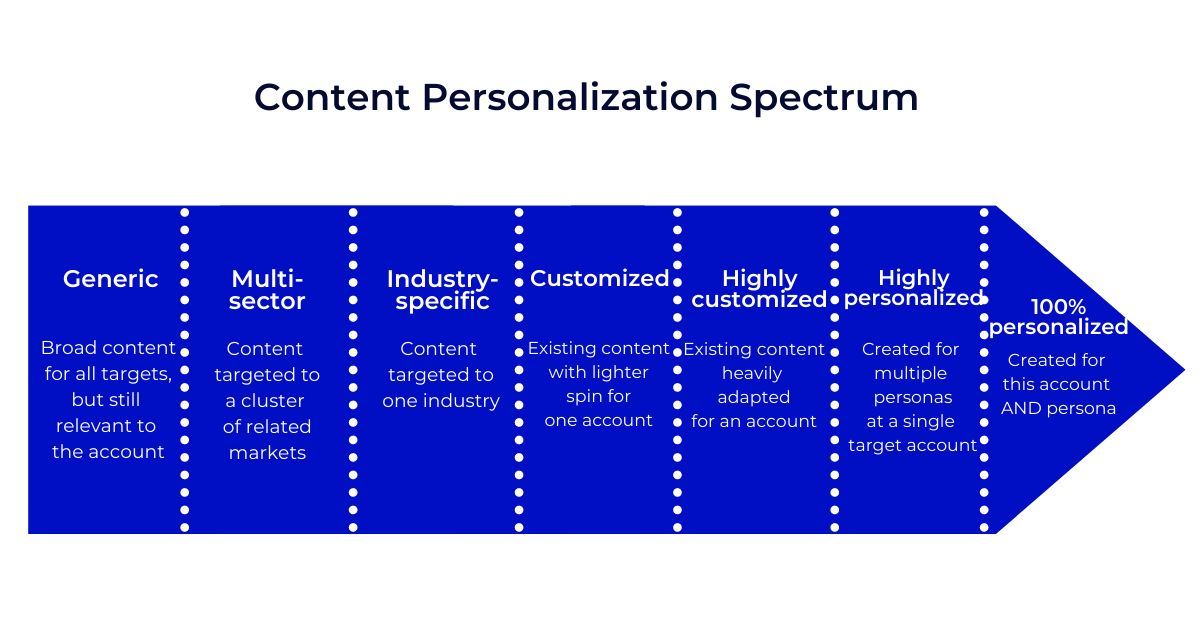
Whether it's a white paper, e-book, video, or case study, your goal with educational content is to personalize it to the point where contacts would want to engage with it.
This doesn't mean you need to put together an e-book for each of your target accounts.
What you can do, however, is produce educational content with a specific buyer persona in mind, and then customize the title and/or intro.

Sales & Marketing Alignment
Aligning Sales and Marketing is a cornerstone of ABM. Here's what you need to achieve at the Engage stage.
- Shared account-based approach
- Collaboration commitment
- Metrics alignment
- Target Accounts selection
- Clear responsibilities and orchestration agreements
You start with a shared ABM approach, and then move on to the next steps such as metrics alignment and target accounts listing.
Later, when it comes to nurturing Engaged accounts, you're better off with a Service Level Agreement (SLA) between Marketing and Sales.
Technology
Finally, our ABM Program Outline wouldn't be complete without the tech stack. Basic tools you would need to start with are:
- CRM
- Landing Pages
- Marketing automation for nurturing workflows
- Ad platforms (things like Demandbase or Rollworks for more advanced)
Make sure your tech stack corresponds to your ambitions.
Feel free to use our Program Outline as a starting point or build your own outline from scratch. What's important is that you give yourself a full picture of what your ABM team puts into account engagement.
Draw ABM Program Orchestration Flow
While ABM Program Outline is an overview of your engagement strategy, ABM Program Orchestration Flow is your Master Action Plan.
Essentially, it's an algorithm designed to get you from point A to point B, with point A being identification of a buyer persona contact, and point B - conversion.
Here is an example of a simple engagement program consisting of different types of offers being distributed via paid ads as well as sales team to Targeted Accounts.

So what really do we see here?
-
Segmentation, Listing & Prospecting
Our starting point is the segmentation, listing, and prospecting for target accounts. As soon as we identify buyer persona contacts, we add them to HubSpot for automations setup.
-
Audience-defined ads
After we get the first cookie match for list members, we launch audience defined ads. This is how we get our contacts to visit the landing page and review the offer we prepared for them.
-
Landing pages for different offers and/or topics
From here, contacts may either convert, i.e. perform the desired action on that page - or be recycled for the next round.
If our contacts convert, they get to the Thank-you page for that specific offer. They are also removed from the list because conversion means that they graduated to the Engaged stage.
As you can see, for contacts that convert from the first offer, the Engage stage ends here. For those that don't, the show goes on.
-
LinkedIn profile visit
10 days after a contact didn't convert from the first offer, our ABM team receives an alert that sales team needs to visit the contact's LinkedIn profile.

-
Automated buyer emails
The next day, the contact receives a buyer email that contains a different offer - related to the same topic as before or a completely new one. The email leads to a new landing page with a new offer.
You know the drill: if the contact converts, they get to the Thank-you page and move to the engage stage.
If they don't, they are recycled for the next round: a LinkedIn visit from a different ABM team member + buyer email with a new offer + a new landing page.
-
LinkedIn connection
If a contact remains unconverted after 3 rounds, we run a C-level check on them. If they qualify and turn out to be a C-level buyer, they receive a LinkedIn connection request from a member of our ABM team.
-
C-level magic
One day after, they get a personalized email to send them a copy of a real book from an SDR. Landing page is customized for C-level role title.
If they don't reply, then they receive another LinkedIn connection request - this time from the leader of our ABM team. What follows is an email asking for a mailing address, and then the landing page.
Final thoughts
Buying roles, personas, org charts, topics & messaging are all results of heavy research that helps lay out your ABM Campaign Schedule, Program Outline, and Orchestration Flow.
As long as you know you're a good fit for your target accounts as much as they are a good fit for you, be ambitious and go for the big fish.
And if you need help with any of the engagement steps outlined here, drop us a line and let's talk ABM 💪



